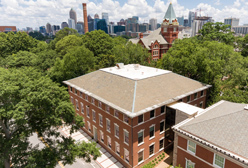New Sponsored Research
Michael Best, associate professor in The Sam Nunn School of International Affairs has been awarded $139,473 by the International Development Reseach Center for the Information and Communication Technologies and Development (ICTD) Peer Mentorship Program.
Kimberley Isett, associate professor in the School of Public Policy has been awarded $82,083 by Columbia University for the project "Mainstreaming Public Health in the Bloomberg Administration: A Model for Reform?"
What Does Georgia Tech Think?
Selected Press for Ivan Allen College of Liberal Arts
|
March 12, 2012 - March 15, 2012
4:00 pm
March 26, 2012 - April 5, 2012
7:00 pm
April 12, 2012 - April 14, 2012
9:00 am
|
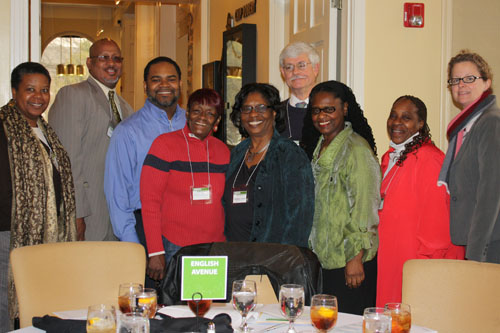
|
Harder Than Rocket Science? Westside Alliance Takes Georgia Tech Civic Engagement in New Directions
Georgia Tech’s move eastward across I-75 into Midtown has shown how dramatically we can impact the health of Atlanta neighborhoods. A new strategic initiative focused on the distressed neighborhoods on the west side of campus intends to find solutions from a different direction.
The Georgia Tech Westside Task Force, comprised of individuals from across campus, and the Westside Communities Alliance which includes external partners, are bringing new life to the Institute’s engagement with surrounding neighborhoods including English Avenue, Home Park, Vine City, and Centennial Park.
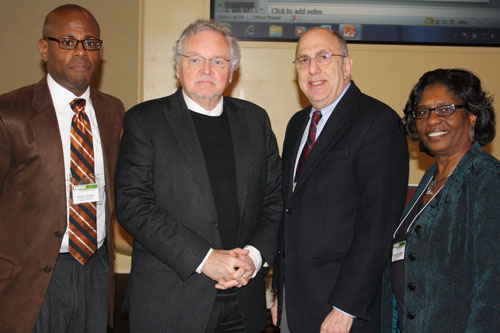 Led by the Ivan Allen College of Liberal Arts and the College of Architecture, and under the umbrella of the Ivan Allen Jr. Legacy Project, these initiatives have been underway for the past year. They were introduced to a larger campus audience February 14 at the “Bridges Symposium: Creating New Links Between the City of Atlanta and Georgia Tech.” Led by the Ivan Allen College of Liberal Arts and the College of Architecture, and under the umbrella of the Ivan Allen Jr. Legacy Project, these initiatives have been underway for the past year. They were introduced to a larger campus audience February 14 at the “Bridges Symposium: Creating New Links Between the City of Atlanta and Georgia Tech.”
“The Westside initiatives are important steps in Georgia Tech’s strategic initiatives linking our research, knowledge generation, and education to community action,” said Jacqueline J. Royster, Dean of the Ivan Allen College of Liberal Arts. “We are bringing coherence and energy to the Institute’s engagement with these neighborhoods. The problems here are different, so the processes won’t look the same and the solutions won’t be the same, but we expect the impact to be comparable.”
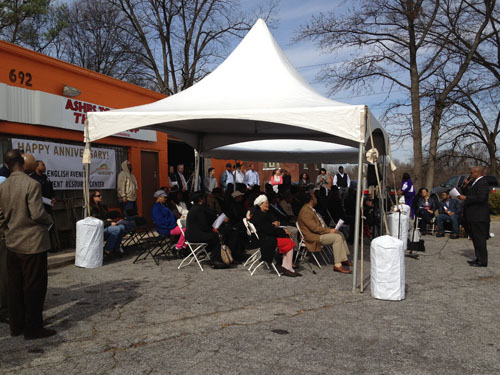 The Bridges Symposium brought together members of the GT Westside Task Force and Alliance members from the Westside communities, the City of Atlanta government, police, fire department, and school entities, NGOs, and Atlanta academic institutions. This diverse group of attendees reflected the initiative’s growing network of symbiotic relationships and provided an opportunity to share perspectives on what the Institute can and should do as a partner in revitalizing the Westside neighborhoods and creating a holistic Westside community. The Bridges Symposium brought together members of the GT Westside Task Force and Alliance members from the Westside communities, the City of Atlanta government, police, fire department, and school entities, NGOs, and Atlanta academic institutions. This diverse group of attendees reflected the initiative’s growing network of symbiotic relationships and provided an opportunity to share perspectives on what the Institute can and should do as a partner in revitalizing the Westside neighborhoods and creating a holistic Westside community.
Keynote speaker Ira Harkavy provided a roadmap for universities as engaged community citizens. He described University of Pennsylvania’s twenty year effort to address poverty, healthcare, and crime in the West Philadelphia neighborhood that surrounds it, and to differentiate Penn by institutionalizing civic engagement as part of its intellectual and academic mission.
“Creating democratic, mutually beneficial, mutually respectful partnerships is not rocket science,” said Harkavy. “It is harder.”
Harkavy, who is a noted expert on university/community relationships and the founding director of the University of Pennsylvania’s Netter Center for Community Partnerships, emphasized that Penn’s civic engagement mission could not be sustained without the Netter Center.
While Georgia Tech does not have such a center, College of Architecture Dean Alan Balfour emphasized the commitment behind the Georgia Tech Westside initiatives.
"The problems facing English Avenue are not unique, they can be found in so many American cities and the residents of such neighborhoods too often lack the experience in terms of planning, architecture and the social sciences to be able to address them,” said Balfour. “Therefore it is the obligation of public institutions such as Georgia Tech not only to offer their expertise, but also to help put in place a system of self-support and, in cooperation with the middle and high schools, attract local young people to careers in the appropriate professions.”
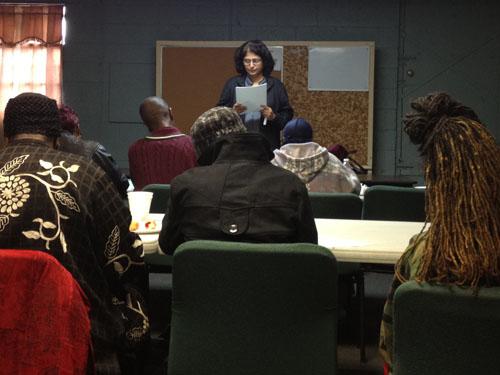 The Symposium highlighted existing efforts by Georgia Tech faculty, staff, and students to integrate service to the city into their research, teaching, and learning and how the Georgia Tech Westside Task Force and the Westside Community Alliance are coalescing those efforts. It reinforced the importance of leveraging current momentum and channeling the Institute’s efforts into a coherent and strategic model in order to experience the benefits that many of our competitor institutions who have moved in this direction are already realizing in a more robust way. The Symposium highlighted existing efforts by Georgia Tech faculty, staff, and students to integrate service to the city into their research, teaching, and learning and how the Georgia Tech Westside Task Force and the Westside Community Alliance are coalescing those efforts. It reinforced the importance of leveraging current momentum and channeling the Institute’s efforts into a coherent and strategic model in order to experience the benefits that many of our competitor institutions who have moved in this direction are already realizing in a more robust way.
Some key ideas brought forward during the symposium included:
- Encouraging faculty to link outreach to their research, solving intellectual problems for long-term, sustainable engagement, and breaking down perceptions that outreach is always considered “service”
- Giving civic partnerships better chances for longevity by pursuing more private and public funding, and leveraging Georgia Tech expertise to secure bigger partnerships
- Advocating for community engagement to hold the same prominence as science and technology in the Institute’s core academic mission
Steven C. Swant, head of administration and finance who attended the symposium remarked, “We need to create an environment where we remove the obstacles and create incentives for faculty, students, and staff to work with the community all around us.”
Hosted by Deans Royster and Balfour, the symposium was organized and moderated by Harley F. Etienne, professor in the Schools of City and Regional Planning & Public Policy. Panelists included Kamau Bobb, CEISMIC, Regents of the University System of Georgia, and Ivan Allen College of Liberal Arts; Emma Bones, Executive Chair, Community Service Council; Chris Burke, Director of Community Relations, Office of Government and Community Relations; T. Hugh Crawford, Associate Professor, Literature, Culture and Communication; Gregory Nobles, Director and Professor, Honors Program, History, Technology and Society; Charles Rudolph, Associate Professor, School of Architecture; Ellen Zegura, Professor, School of Computer Science; Kenneth Knoespel, School of Literature, Culture and Communication, Discussant.
Pictured in the top photograph (l-r):
Leaders from the English Avenue community with Dean Royster and Ken Knoespel
Pictured in the second photograph:
Harley Etienne, Dean Balfour, Ira Harkavy, and Dean Royster
Pictured in the third photograph:
Georgia Tech representatives acknowledged at English Avenue neighborhood celebration for partnership efforts
Pictured in the bottom photograph:
Economics Chair and Professor Usha Nair-Reichart, led a recent financial literacy workshop for English Avenue residents
|
Eleven IAC Faculty Recognized for Teaching Excellence
|
|
Ivan Allen College of Liberal Arts is proud to announce that eleven of our faculty were recognized by Georgia Tech with Course Instructor Opinion Survey (CIOS) Teaching Excellence Awards. The Center for Enhancement of Teaching and Learning (CETL) announced the recipients of the annual faculty awards recognizing excellence in teaching during the Fall 2010 and/or Spring 2011 semesters. The awards are based on exceptional response rates and scores on the CIOS submitted by students. Recipients will receive $1000 in recognition of this honor. Congratulations to the following eleven IAC faculty who received this award! Kelly Comfort, Assistant Professor (Modern Languages) Douglas Flamming, Professor (HTS) Lionel Gall, Instructor (Modern Languages) Stuart Goldberg, Associate Professor (Modern Languages) Karen Head, Assistant Professor (LCC) Christophe Ippolito, Assistant Professor (Modern Languages) John Krige, Kranzberg Professor and Director of Graduate Studies (HTS) Jin Liu, Assistant Professor (Modern Languages) Melissa Pilkington, Instructor (Modern Languages) Nirmal Trivedi, Brittain Postdoctoral Fellow (LCC) Ruth Uwaifo, Assistant Professor (ECON) |
Breznitz Speaks at Brookings Forum on Innovation and Production Policy
|
|
Dan Breznitz, Associate Professor in the Sam Nunn School of International Affairs, was a panelist on a forum about innovation and production hosted by the Metropolitan Policy Program at the Brookings Institution on February 22 in Washington, DC. The forum, entitled "Why- and Which-Manufacturing Matters: Innovation and Production in the United States," examined manufacturing methods, policies, and export-intensive production. Breznitz and the other panel members are all CONNECT Innovation Institute scholars from the private sector and academia. During the forum, the panelists presented recommendations regarding specific actions that can ensure competitiveness, particularly at the regional level, in order to enhance the benefits of innovation across society. Breznitz focused on the relationship between innovation and economic growth, as well as innovation policy. "In order for innovation to help economic growth we can't stop just in the act of inventing, we actually have to come with products and services and continuously improve them and make them cheaper," Breznitz said. "That's where innovation has its true impact on economic growth." He continued, "The world has changed. Our theories and, especially, the way we think about policies have not. One of the major changes of the new so-called globalization is that we have fragmented production." Breznitz was asked by the moderator, Robert Atkinson, to elaborate on industrial policy in terms of innovation and economic growth. He responded, "I would say that if we care... about innovation and economic growth in this country, we have to realize that if we want to excel in producing services and products (most of which are the same thing or are combined), we have to think about the difficult task of coordination across many different companies." The Brookings Institution is a nonprofit public policy organization based in Washington, DC. CONNECT Innovation Institute is a think tank to develop and publish white papers on innovation policy and competiveness in the global economy. |
America's Workforce Competitiveness at Risk: Willie Pearson Jr. Promotes Science and Mathematics Proficiency
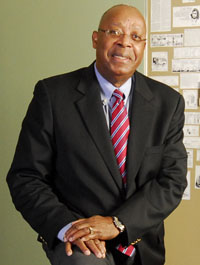
It's difficult for the U.S. to remain the world's leader in innovation when significant segments of its K-12 student population are not proficient in basic science and mathematics, and far too many workers lack adequate scientific and technical skills.
Willie Pearson Jr., a professor of sociology in the Ivan Allen College of Liberal Arts School of History Technology and Society, points out that over the past 20 years, a number of research reports, newspaper articles, and commentaries have chronicled incidents of young store cashiers unable to count out change, young adults unable to calculate a simple 15 percent tip for a meal, or the price of a food item based on unit cost.
Pearson says these incidents raise ominous concerns about the state of K-12 education and the competency of entry-level, low-skilled workers. He cites a survey reporting that only 51 percent of the adults surveyed knew how long it took the Earth to revolve around the Sun.
In recent years, a number of blue-ribbon reports have expressed concern about the impact of the quality of K-12 education on continued scientific and technical leadership and economic growth. "There is ample evidence that advances in science and engineering have had, and continue to have, a large impact on economic growth and job creation that foster innovation," said Pearson, adding that industries that rely on workers with at least some level of scientific and technical proficiency are expressing growing frustration about the number of U.S. applicants who lack adequate science, mathematics and problem-solving skills to succeed in a knowledge-based economy.
The heart of the matter, according to Pearson, is that too many students graduate from high school "without acquiring basic levels of science and mathematics proficiency." His assertion is supported by a number of reports expressing concern that many U.S. students are ill prepared for the demands of the global economy. A recent "Trends in International Mathematics and Science Study" showed that by the time they complete eighth grade, about three in four U.S. eighth graders are not proficient in mathematics. Although 10 percent of U.S. eighth graders met the advanced international benchmark in science, 32 percent of their peers in Singapore and 25 percent in China did so. At the high school level, nearly 80 percent of graduates failed to meet the readiness benchmark levels for one or more entry-level college courses in mathematics, science, reading and English. U.S. 15-year-olds ranked 25th among students from 34 countries on a math test and scored in the middle in science and reading.
"While many will find these figures disturbing, it is important to note that they reflect the fact of differential access to high-quality instruction," said Pearson. "That's just not going to cut it if the U.S. is to remain an innovation leader in the global economy."
Pearson's research and professional career have been dedicated to developing policies and programs to build a more diverse and competitive scientific and technical workforce in the U.S.
"My work focuses largely on human resources in the science and engineering workforce," he said. "While most of my research examines the effects of race and gender on the careers of doctoral scientists and engineers, in the past decade I have focused increasingly on the science and mathematics preparedness of the science and engineering talent pool. In fact, my collaborations are with professionals from a wide range of disciplines, including engineering, economics, chemistry, mathematics, sociology, and political science, both nationally and internationally."
Because much of his research on the workforce is interdisciplinary and policy oriented, "it has led to my serving on advisory committees and boards at the National Institutes of Health, National Science Foundation, Sloan Foundation, Burroughs Wellcome Fund and the White House. "As a member of both the American Chemical Society and the American Sociological Association, I know first-hand the value of interdisciplinary collaborations. Interdisciplinary approaches to the study of the scientific and technical workforce enrich and enhance our research."
During the past two years, Pearson participated in two U.S. National Academy of Sciences projects involving interdisciplinary research relevant to science and engineering education and the workforce. He served as a member of the study panel that produced a report titled, "Expanding Underrepresented Minority Participation: America's Science and Technology Talent at the Crossroads." This panel's report broadly defined several proposals for upgrading the workforce, such as the development of programs to promote reading and mathematics skills among children from pre-school age to third grade. The report also recommended improved math and science education for women and minorities in K-12, as well as increased financial, academic, and social support for women and minority students who may be interested in pursuing math and science degrees or careers.
The second study panel examined effective K-12 science and mathematics education practices. The panel findings were published as "Successful K-12 STEM Education: Identifying Effective Approaches in Science, Technology, Engineering and Mathematics." The report was released to the public in September 2011 at Drexel University.
Poor science and mathematics skills are just symptoms of a larger problem, Pearson said. "Over the past 20 years, there have been significant changes in the national and international status of U.S. science and engineering. Consider the fact that the U.S. fell from first to twelfth place in the share of adults ages 25 to 34 with post-secondary degrees."
Science and engineering have consistently comprised about a third of bachelor's degrees awarded in the U.S. Pearson noted that this proportion pales in comparison to Japan's 63 percent, and China's 53 percent. Furthermore, in Asia, about 20 percent of all bachelor's degrees are awarded in engineering compared to only 5 percent in the U.S. In 2007, international students earned 24 percent of science and engineering master's degrees, and 33 percent of doctoral degrees awarded by U.S. institutions.
One of the keys to replenishing America's technology workforce, as noted in both National Academy of Sciences reports, is establishing a foundation that prepares students to succeed at each step along the science and engineering educational pathway.
"Professional development and better preparation for teachers will help to sustain students' interest in math and science, along with the availability of more hands-on classroom activities," Pearson said. "We know that when students use their hands to manipulate objects and engage in activities, they are far more likely to be interested in science and mathematics. But more importantly, teachers must believe that all children have the capability of learning and excelling mathematics and science." As evidence, Pearson points to a study showing that about 92 percent of eighth graders with high achievement in fifth grade were taught by teachers with a degree or certification in mathematics, compared with 77 percent of those with low fifth-grade achievement.
Pearson anticipates a rapidly unfolding future in which the technological prowess of a society's workforce makes the essential competitive difference -- even more than it does today. For the U.S., racial and ethnic minorities, persons with disabilities, and women represent a vast underutilized talent resource in building the science and engineering workforce.
"Women comprise more than half of the population, and more than half of the college population," he elaborated. By not bringing in more members of this group into the scientific and technological workforce, "we're missing out on a considerable source of talent." Currently, although women constitute about 40 percent of those with science and engineering degrees, they remain severely underrepresented in most science and engineering occupations. In fact, men continue to earn a majority of the bachelor's degrees in the more quantitative disciplines of engineering, computer science, and physics, he pointed out.
Similar underrepresentation holds for African Americans and the rapidly growing Hispanic segments of the population. As a group, they are less likely than non-Hispanic whites to take advanced science and mathematics courses in high school. Although Hispanics and other underrepresented racial minorities combined represent about a quarter of the U.S. population, they comprise 13 percent of college graduates and 10 percent of those with college degrees in science and engineering occupations.
"Just do the math," Pearson said. "There will be grave implications for the U.S. science and engineering workforce if the nation fails to draw on the talents of all its citizens."
He cited one survey of U.S. companies in which about one-third reported some skills shortages. "Company executives claim that the situation has driven them to rely more and more on international students and workers to fill the skills gaps." "The U.S. has and continues to draw on foreign talent at the graduate level, especially students from China and India. In my view, this is not necessarily negative because the U.S. actually needs the incredible talents of these students to help build a more robust innovation system. However, these students' host countries recognize the criticality of their talents and training in developing their home country's global competitiveness. Their home countries are offering creative incentives for them to return. Indeed, both China and India have recruited high-profile scientists and engineers from the West to head major research and development projects. The trends reinforce the need for the U.S. to be more proactive in developing its domestic talent base."
|
Islamic Feminism in Post-Revolutionary Egypt: Laura Bier Interviewed by Peace X Peace
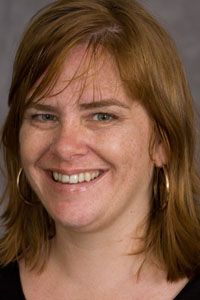
Peace X Peace Connection Point Manager Yasmina Mrabet interviewed Dr. Laura Bier, professor at Georgia Tech, about her thoughts on the role of Islamic feminism and the challenges and opportunities for women in post-revolutionary Egypt. Her responses are below.
Can you tell us a little about your personal background, how you became interested in studying Islamic feminism, and the role of women in Egypt particularly?
I was getting my MA in Middle Eastern Studies at the University of Chicago. When I started there I had almost no interest in gender history or the history of feminist movements. But it was 1993 and so much of the really exciting work in Middle Eastern Studies—in history in general—was being done in the field of gender history. All of the questions you could possibly want to ask as a historian—about social relations, about human agency, about the politics of culture, about the complicated legacies of colonialism for the region—were being asked and answered in new and fascinating ways, in Middle East gender studies. By the time I left the University of Chicago in 1995 to do a Ph.D. in Middle Eastern History at New York University (received in 2006), I was hooked. I had a lot of previous experience in Egypt—both as a study abroad student and as a tourist—and Egypt has a long rich history of women’s activism, so it seemed like a natural focus for me. So I came to an interest in Islamic feminism through an interest in secular nationalist projects and how they position women.
My research looked at the 1950s and 1960s in Egypt and how gender became central to the secular modernizing project of the Gamal Abdel Nasser regime. (This research has just been published as a book, Revolutionary Womanhood, by Stanford University Press.) What I came to find as I grappled intellectually with the legacies of the Nasser regime’s “state feminism” is that the normative practices and assumptions which had shaped the Egyptian nationalist project of modernity—and Egyptian feminist engagements with it—in the second half of the 20th century had also come to be embedded in interesting ways in Islamist projects. For example, Islamist prescriptions on veiling presume, rather than preclude, the presence of Muslim women in a heterosocial public sphere. The Islamist vision of the ideal marriage as focused on couples joined together on the basis of respect, affection, and companionability mirrors ideals of companionate heterosexual intimacy which have structured nationalist visions of marriage since the beginning of the 20th century. Lila Abu-Lughod’s and Mervat Hatem’s work comparing the gender politics of Islamism and secularism have been invaluable in helping me think about those issues. I’m interested now to see what sorts of things are novel about the ways in which activist Muslim women are engaging the present moment politically and socially.
What do you see as the current role of Islamic feminism in the context of the post-revolution climate in Egypt?
One of the things which I think is most exciting about what’s happening now in Egypt is that women activists who identify themselves in a variety of ways—whether that be secular or Islamic or leftist or nationalist or whatever—are actively working together in new ways to achieve political demands and to improve the lives of all Egyptians and Egyptian women in particular. I wouldn’t go so far to say we’re seeing a “post-ideological” moment in Egyptian politics, but I do think that if we focus too rigidly on those kinds of categories as the determining factor in women’s activism, we risk missing what’s novel about it, and we miss opportunities to learn from the example of Egyptian women’s activism, which has a lot to teach American and European women about ways of being inclusive and forging alliances across groups of women coming from diverse backgrounds with various perspectives and needs.
That said, I think Islamic feminism has a very critical role to play in the formulation of post-revolutionary politics and society. For the majority of Egyptians, faith is a fundamental part of both their identity and lived social reality. Any politics which is to be truly democratic, inclusive, and representative must take that as a starting premise. Interestingly, the changes which would allow the emergence of a powerful, grassroots discourse of women’s empowerment from within an Islamic framework have already occurred. Over the last fifteen years or so, Muslim Egyptian women have increasingly claimed the authority to interpret Islamic scripture outside the boundaries of the traditional, male-dominated religious establishment. One of the most public manifestations of that is the prominence of female writers and thinkers like Safinaz Kazem (who rejects the label of “feminist”) and Hibba Raouf Ezzat (who accepts it). Both couch their gender critiques of society and politics from within an Islamic framework. On a more grassroots level the women’s piety movement, which really gained momentum in the 1990s, has empowered tens of thousands of women to engage in the process of religious interpretation for themselves through Qu’ranic study groups led for women by women. These women have a pivotal role to play in helping to define what Egyptian society will look like and what possibilities for social justice will be available to women within the new order.
Given the gains made by the Muslim Brotherhood in Egyptian elections, many are asking how this will impact women’s rights. What are your thoughts on the challenges and opportunities that women might face in Egypt under the Muslim Brotherhood?
I think it’s still too early in the process to tell. I think the Brotherhood is evolving and changing to respond to a political and social landscape which is itself undergoing rapid and radical transformation. A lot will depend on the results of the election and where the Brotherhood and its Freedom and Justice Party try to position themselves within the political landscape. The Muslim Brotherhood is no longer an outlawed organization operating in an authoritarian political landscape, but is an official political party in an emerging democracy that has to be accountable to the voting population in order to win elections. This may prompt them towards moderation on women’s issues, particularly if they chose to position themselves as a more moderate Islamic alternative to the Salafi Nour party. There’s a tendency to assume, just because the Muslim Brotherhood identifies itself as an Islamic party, that a Brotherhood parliamentary majority will signal some sort of death knell for women’s rights.
That kind of assessment begins with the erroneous yet all too common presumption that there is some fundamental incompatibility between Islam and rights for women, or that there is no way for an Islamic party to present a program which recognizes women’s civic and social rights or accords them any political agency. That’s simply not the case. Historically, the Brotherhood has advocated for women’s education, recognized women’s right to work, and promoted a vision of marriage as a relationship based on mutual respect and affection. Nor does the Brotherhood exclude political participation of women. One of the few women who will likely be seated in the new Egyptian parliament is a Freedom and Justice Party member, and the Brotherhood’s female wing, the Muslim Sisters, has been taking a more vocal and active role in the organization than they have in decades. It will be important to see if this translates to more women being accorded real leadership positions in the party and if they will be responsive in a meaningful way to the needs and demands of their female constituencies.
Whether or not the Muslim Brotherhood is in power, Egypt is still a patriarchal society. Do you think that challenges and opportunities would be different for women in Egypt if more secular parties came to power?
I think that’s a very important question, one which is not asked nearly enough in the mainstream American or European media. I think there’s a great risk, whether the Muslim Brotherhood gains a parliamentary majority or not, that the question of what women actually need to improve their lives will take a back seat to what women represent politically and ideologically. At moments of heightened political change gender issues often become politicized in ways which marginalize women and are profoundly disabling to a politics which takes the civic rights of and social justice for women as foundational.
The issue is not whether the winning party is secular or not, but will the voices of women remain center stage as they have been throughout the revolution? Does the emerging democratic order accord women—and all Egyptians for that matter—full civic rights, social justice and dignity, including the right to organize and to protest, to be free from extrajudicial detention and torture? We’ve seen over the last weeks that the state has targeted female protesters and activists for sexual assault and particularly gendered forms of humiliation. These are the challenges which Egyptian women will have to face, challenges which transcend individual political parties and lie at the heart of a process of democratization which is still very much contested. Also I think it’s helpful to keep in mind that revolutions take a long time. In some respects, getting rid of Mubarak was the easy part. The lasting, fundamental grassroots changess that are the revolution’s promise will take much, much longer.
What are the greatest areas of need for women in Egypt, and how can the global community help to support Egyptian women in meeting those needs?
In a lot of ways the needs of Egyptian women are the needs of all Egyptians. There needs to be a true process of democratization which includes the rights that I talked about above—the right to protest, to have their voices count in a substantive way in the political process, freedom from arbitrary arrest, freedom from torture. And those rights can’t only be on paper; they have to be an integral part of the practice of democratization itself. The challenges that women face in realizing and practicing those rights may be somewhat different than the challenges men face, but the needs are the same. The actions of the military council which is ruling Egypt have demonstrated that fundamental political changes are hardly a foregone conclusion. It’s important not to assume that the revolution is over just because Mubarak is gone. In many respects, the ancient regime is still in place. Moreover, given the vast social and economic inequalities and hardships which are the reality for the vast majority of Egypt’s population, political rights will loose a lot of their meaning without an equal commitment to social justice.
The case of South Africa is instructive. Apartheid is over and the system of racialized segregation and hierarchy has ended, but to a large degree, it has been replaced by a system defined by the informal barriers of class, wealth, and poverty. If the political system changes, but the economic and social system do not, then the revolution will have failed. The best way for the global community to support Egyptian women is to respect and support the process of democratization in all of its messiness. There are those who caution against true democracy in Egypt on the grounds that the strong showing of the Muslim Brotherhood would mean the oppression of women, Copts, and other groups. I’ve already pointed out the problems inherent in such a view. Instead of using a liberal vision of “women’s rights” as a marker of whether Egyptians deserve political freedom, we need to be asking Egyptian women themselves what they want and need, with the understanding that there’s no necessary agreement between Egyptian women themselves. Being in solidarity with Egyptian women and their revolution means doing the hard work of recognizing and valuing those differences.
If there was one thing you could highlight to the world about Islamic political movements and the role of women, what would that be?
This is a moment of great potential for women and women’s activism in the region. Islamic political moments, far from being a hindrance, have helped create the conditions of possibility for novel and potentially revolutionary forms of women’s agency, empowerment, and participation within an Islamic framework. For millions of women across the globe, Islam contains the possibility for radical, positive change and affirmation.
Connection Point is a Peace X Peace initiative that links Arab and Muslim women with women from Western countries in a vibrant online community.
|

|
The Process of Color Coding Ants
Andrew Quitmeyer, a Digital Media Ph.D. student and research assistant in the Bio-tracking Lab, has created a fascinating video that presents step-by-step instructions for color-coding ants within a colony and was featured on Scientific American's Observations Blog.
The color-coding of a single ant is a painstaking process which involves the use of CO2 gas, a stereoscope, and a small paintbrush. The technique is useful for tracking the movement of one ant among the thousands that make up a colony and is in use at labs such as the one at Georgia Tech that study emergent behavior in groups of insects.
Check out the Quitmeyer's video http://blogs.scientificamerican.com/observations/2012/02/17/color-coding-ants/
|
Public Policy Student Arora Wins GTRIC Award
|
|
School of Public Policy PhD student, Sanjay Arora, won a poster session award at the 2012 Georgia Tech Research & Innovation Conference (GTRIC) on February 7th. Arora's poster was entitled: "Commercialization of New and Emerging Technologies: A Cross Country Comparison of Graphene Firms." The project looks at how small- to medium-sized firms working in graphene, a novel nanotechnology material, present and reveal their business strategies online. The findings suggest that "firm strategy is influenced by level of technical specialization, country level factors,and the degree to which the firm is oriented toward application and end-use sectors. Implications for entrepreneurship and innovation policy highlight the heterogeneous composition and goals of young companies working in novel scientific areas." More than 300 Georgia Tech graduate students presented research at the conference. As a winning poster, Arora receives a $1500 professional travel grant to present his research at professional meetings. His research is ongoing with the Georgia Tech Program in Science, Technology, and Innovation Policy (STIP) and is supported in part by the Center for Nanotechnology in Society at Arizona State University (CNS-ASU) with sponsorship from the National Science Foundation. Organized and hosted by the Georgia Tech Student Government Association, the annual GTRIC showcases our graduate student research with a goal of stimulating student innovation and providing students with opportunity to pitch ideas and obtain sponsorship. |
LCC Students Are Finalists in National Campus MovieFest
|
|
Two films created by students from the School of Literature, Communication, and Culture (LCC) were selected as winners in the world's largest student film festival, the 2012 national Campus MovieFest, and will screen at the finale in Hollywood. The Therapist, directed by Computational Media (CM) student Connie Chen, won Best Picture, and therefore will also screen at this year’s Festival de Cannes. Chen is a finalist for the Paul and Daisy Soros Fellowship for New Americans as well as the prestigious Master of Fine Arts film program at New York University. Created in 2012 by Frameless Productions at Georgia Tech, the film is about a grieving therapist who receives a surprise visit from an unexpected patient. Elevator Experiences, a film for which Science, Technology, and Culture (STAC) student Louella Lugo took home the Best Actress award, was produced by John Thornton's Crew at Georgia Tech in 2012. Among the cast and crew were IAC student Connie Chen (CM), and STAC students Kevin Warstadt, Daniel Frazier, Hayley Hogan, Amira Saleh, and Ryan Malis. Participation by the Georgia Tech teams was enabled by LCC which offers an Undergraduate Certificate in Film Studies and is equipped with a Video Lab that provides students with access to film making equpment. The lab is directed by John Thornton. |
Georgia Tech and Bicycle Infrastructure Improvement Committee Honored by Atlanta Bicycle Coalition
|
|
Despite being formed a little more than one year ago, the Bicycle Infrastructure Improvement Committee (BIIC) is already making an impression. The student committee and Georgia Tech Institute were recently honored by the Atlanta Bicycle Coalition as its Partner of the Year for 2011. “We’re very honored to receive such recognition," said BIIC Chair Johann Weber, a graduate student in the School of Public Policy. "We view it as a sign that Georgia Tech has really stepped out from under the shadows to become a leader in supporting bicycling in Atlanta.” Georgia Tech and the BIIC jointly won the Partner of the Year award as recognition for the committee's work, as well as for Tech’s “comprehensive approach to becoming a bicycle friendly university" through funding, installing facilities and infrastructure, the launch of viaCycle, and program expansion over the course of 2011. |
|

